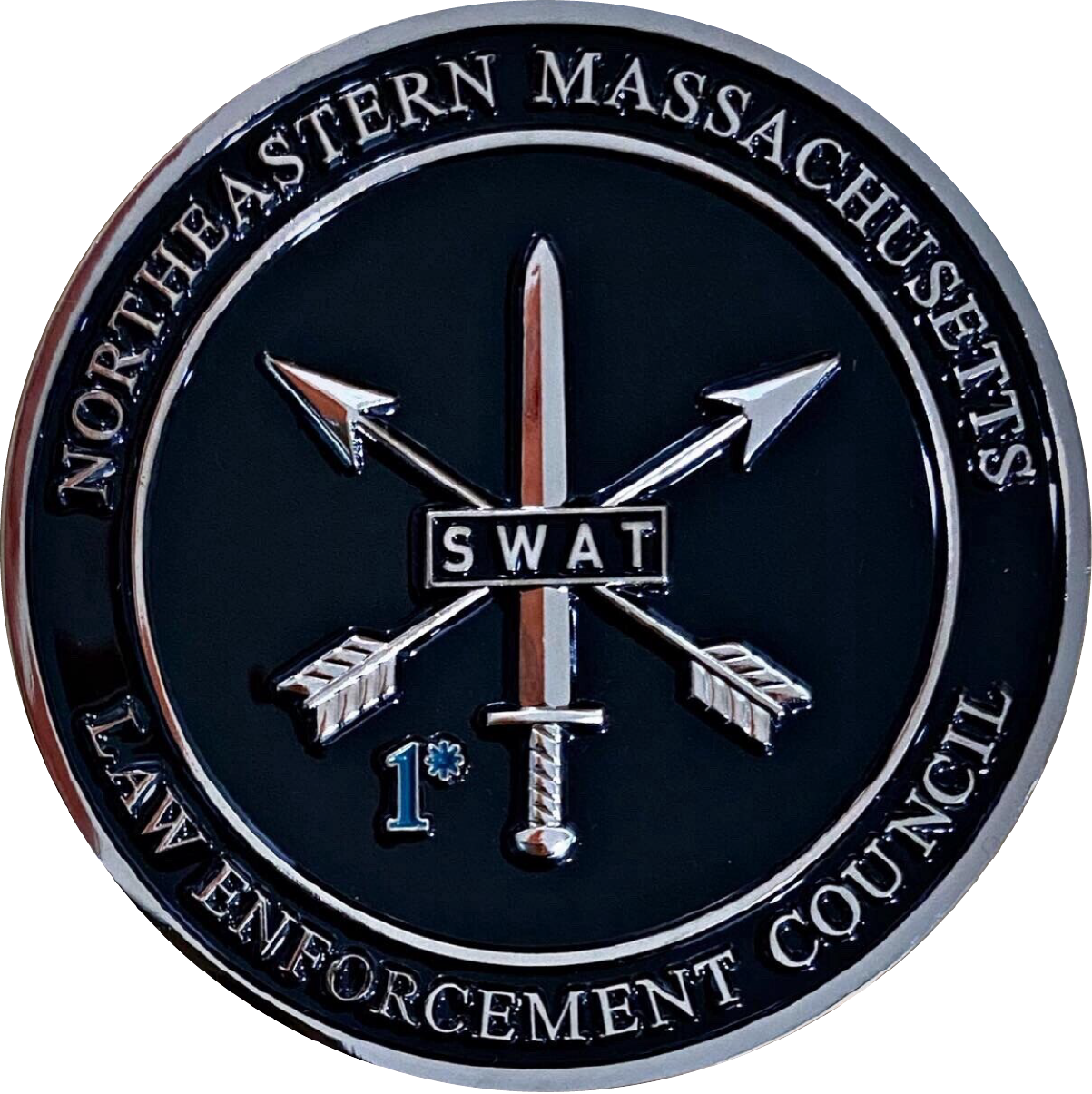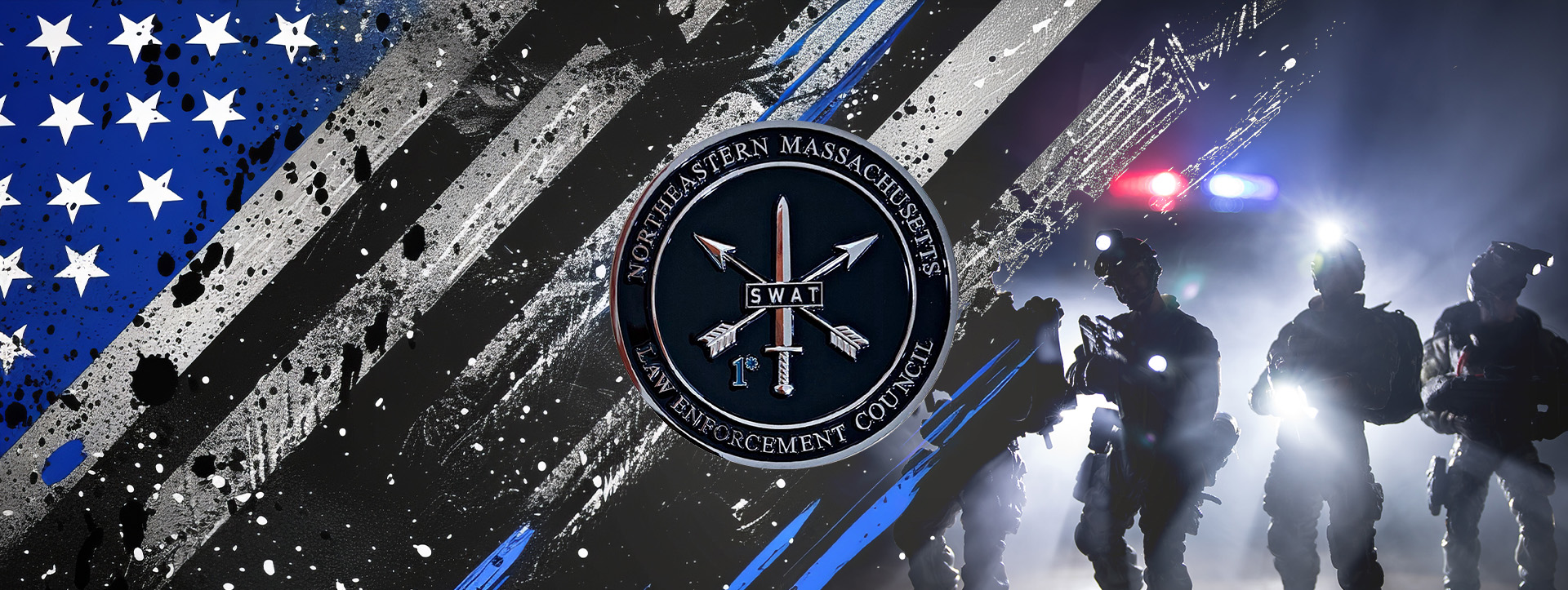Resource Links for NEMLEC SWAT Unit:
SWAT/ RRT
The Northeastern Massachusetts SWAT (Special Weapons and Tactics) and RRT (Rapid Response Team) Unit is a highly trained tactical force specializing in responding to high-risk incidents that exceed the capabilities of standard law enforcement. Comprising officers from multiple departments within the region, this elite unit is prepared to handle situations such as hostage rescues, armed barricades, counterterrorism operations, and high-risk warrant service. Members undergo rigorous physical and tactical training, including firearms proficiency, breaching techniques, and crisis negotiation, ensuring they can neutralize threats with precision and minimal risk to civilians.
The Rapid Response Team operates alongside SWAT but is specifically designed to manage large-scale civil disturbances, riots, and crowd control situations. This unit is equipped with specialized gear, including riot shields, non-lethal munitions, and de-escalation tools to handle volatile situations while prioritizing public safety. RRT officers receive training in crowd dynamics, protest management, and de-escalation strategies, making them an essential force during public demonstrations and emergency situations that require swift, organized responses.

Key Features of the Northeastern Massachusetts SWAT & RRT Unit:
- SWAT specializes in high-risk operations, including hostage rescues and armed standoffs.
- RRT focuses on managing civil disturbances, riots, and large-scale crowd control.
- Both units undergo advanced training in firearms, breaching, and crisis negotiation.
- They provide active shooter response training and community preparedness programs.
Both the SWAT and RRT units serve as critical resources for law enforcement agencies in Northeastern Massachusetts, ensuring that communities remain protected in times of crisis. Their expertise extends beyond tactical operations, as they also assist with active shooter training, joint agency exercises, and community preparedness programs. By continuously refining their skills and working in coordination with local, state, and federal agencies, these units stand as a frontline defense against extreme threats while maintaining a focus on safety and resolution.
